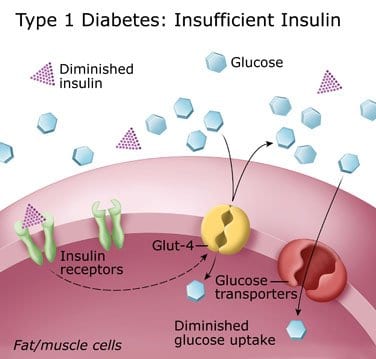Water retention, also known as Edema, is caused by a few different reasons and is common in those who have diabetes. It might be from a mild illness or condition. Other times when someone has water retention it could mean something more serious is happening in the body.
Water retention is common in:
- Ankles
- Feet
- Wrists
- Arms
It is best to see a Doctor to make sure the cause of the water retention is not serious and that it can be cured.
Diseases in the Kidneys, Liver, and Heart are known for expressing water. People who have Diabetes and take Thiazolidinediones medications are also known to have water retention. Thiazolidinediones are commonly used to treat Type 2 Diabetes. It helps the body produce more insulin.
Thiazolidinediones can cause:
- Weight gain
- Edema (Swelling)
These symptoms usually go away after a few weeks of taking the treatment.
There are three types of Edema that are associated with Diabetes.
Macular Edema
Macular Edema is one of the types. It consists of swelling in the macular which is near the retina’s center. This is the area that helps a person be able to read. It is also responsible for daytime vision and color reception. Diabetic Retinopathy caused Macular Edema is a complication caused by Diabetes. It starts by the leaking of fluid from blood vessels into the macula. Eventually this can cause the person to go blind.
Pulmonary Edema
Pulmonary Edema is the second type. This happens if someone is using certain Diabetic medications and also if the person has cardiovascular problems. Treating this type of Edema consists of inserting a catheter which drains the fluids.
Foot and Leg Edema
Foot and Leg Edema is also a type that is experienced. This type of Edema can cause a high risk of non-healing wounds with someone who has Diabetes. Treatment for this type usually is with manual decongestive therapy and diuretics.
Treating Edema
It is very important to prevent Edema from happening. If it goes untreated, it can lead to serious outcomes such as vision loss if you have Diabetic Retinopathy. The main way to stop the Edema is by ceasing the source. Diabetes will not go away, but it can be controlled and taken care of. If you have Diabetes and notice swelling it may be linked to the medication you take so be sure to let your endocrinologist know right away. It can be fixed as simple as changing your medication. Having screenings routinely done will help detect if there is a serious problem before it is full blown.
Once you have knowledge of Edema it will prepare you. When your ankle or leg is swollen you should understand why it is happening and what you can do to solve the problem. It may be as simple as propping your leg high. Understanding what you can do to fix the issue will make your life easier. If water retention continues to happen for you, discussing this issue with your Doctor will help. The Doctor is knowledgeable with Diabetes and how it can cause this to happen. Being screened and aware will keep you from having water retention and other serious effects from it. Always keep your blood sugars under tight control and get exercise as this will help the overall problem and keep you in better shape.









